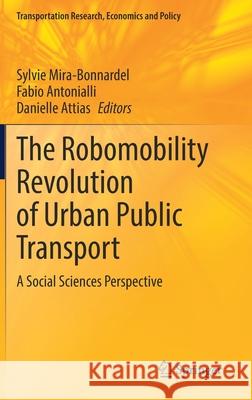The Robomobility Revolution of Urban Public Transport: A Social Sciences Perspective » książka
topmenu
The Robomobility Revolution of Urban Public Transport: A Social Sciences Perspective
ISBN-13: 9783030729752 / Angielski / Twarda / 2021 / 208 str.
Kategorie:
Kategorie BISAC:
Wydawca:
Springer
Seria wydawnicza:
Język:
Angielski
ISBN-13:
9783030729752
Rok wydania:
2021
Wydanie:
2021
Numer serii:
000047465
Ilość stron:
208
Waga:
0.50 kg
Wymiary:
23.39 x 15.6 x 1.42
Oprawa:
Twarda
Wolumenów:
01
Dodatkowe informacje:
Wydanie ilustrowane











